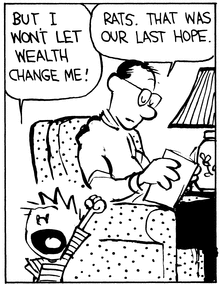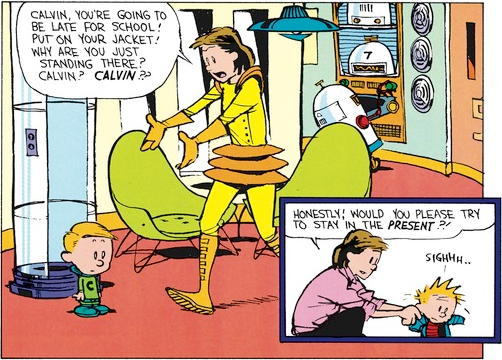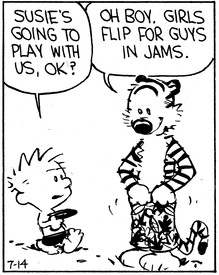Overview: Introduction to Calvin & Hobbes
Created by cartoonist Bill Watterson, Calvin & Hobbes was a daily comic strip that was run in newspapers between 1985 and 1995. Even 30 years beyond its final installment, it remains one of the most beloved comic strips of all time, largely due to its charm and Watterson's commitment to artistic integrity. At a time when the most popular comics were content to linger far past their prime—churning out low-effort panels and remaining in the public consciousness just enough to keep selling merchandise—Watterson was constantly fighting his publisher for greater control of his work, shunning nearly all merchandising opportunities and strong-arming newspapers into loosening their layout requirements to allow more artistic detail and creativity. And then, after all that (and at the height of the strip's popularity), he ended Calvin & Hobbes on his own terms, thus avoiding the fate of the industry's biggest names, all of which had eventually devolved into something uninspired and mass-produced.

The strip centers on six-year-old Calvin, seemingly the archetypal "troublemaker kid" who gets bad grades, doesn't have any friends, and drives his parents (and everyone else) crazy. However, far from being the little prick who wears a shit-eating grin as he urinates on the logo of some automaker or another (as depicted in the copyright-infringing stickers donning the back window of many pickup trucks circa twenty years ago), Calvin isn't what you would call "outright evil", and is frequently shown to be thoughtful—albeit oftentimes misguidedly so—in his efforts to navigate a world that is always chafing against his own interests.
Much of this conflict is exacerbated by his vivid imagination, through which he is often transforming the mundane world he occupies into something more interesting, magical, and fun. I'd argue that Watterson's inventiveness and dedication to properly depicting the world through Calvin's eyes is the primary reason the strip was so highly praised. Deep down, none of us have ever stopped wanting to see the world as Calvin does.

It's through this imagination that we get Hobbes: Calvin's sole companion, and also a tiger. From everybody else's perspective, Hobbes is nothing more than a stuffed animal that Calvin maintains an obsessive attachment to; but to Calvin, Hobbes is a living entity who serves as his best friend, confidant, playmate, co-conspirator, competitor, and everything in between. Sometimes eager to join in on Calvin's antics while other times acting as the voice of reason, Hobbes is often what Calvin needs him to be in the moment. That's not to say Hobbes is a blank slate; he tends to be calm and reserved (at least when he's not giving in to his animalistic impulses), he clearly has an inherent sense of fun and finds joy in simple delights, and he often questions the motivations behind the most basic of human actions, providing a more balanced counter to Calvin's self-serving opinions.

This should serve as a sufficient primer as I dive into this investigation, which I'll explain in greater detail in the next section.